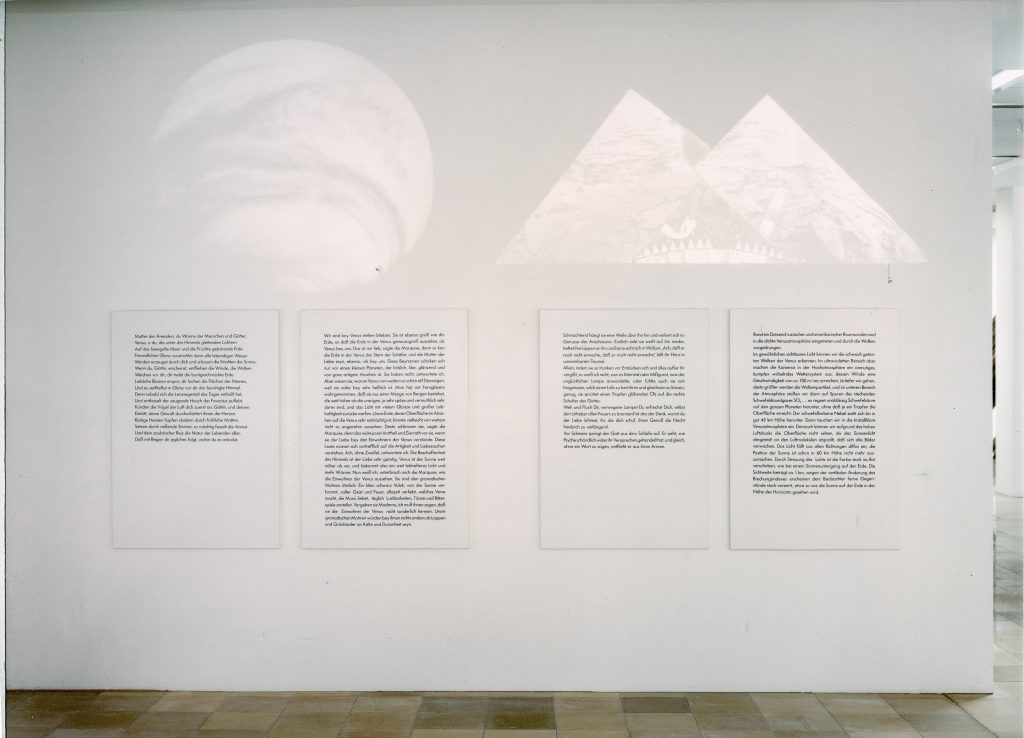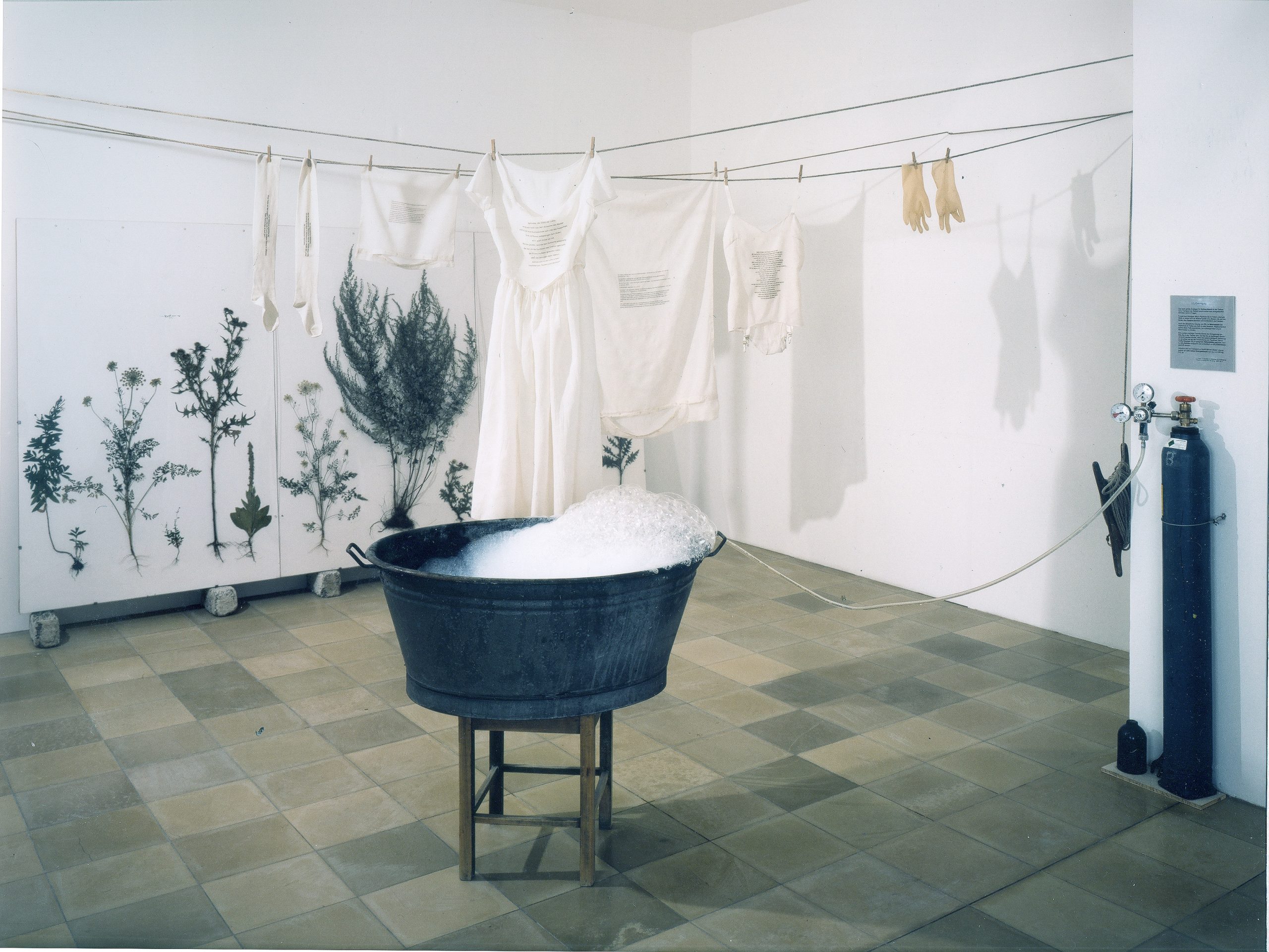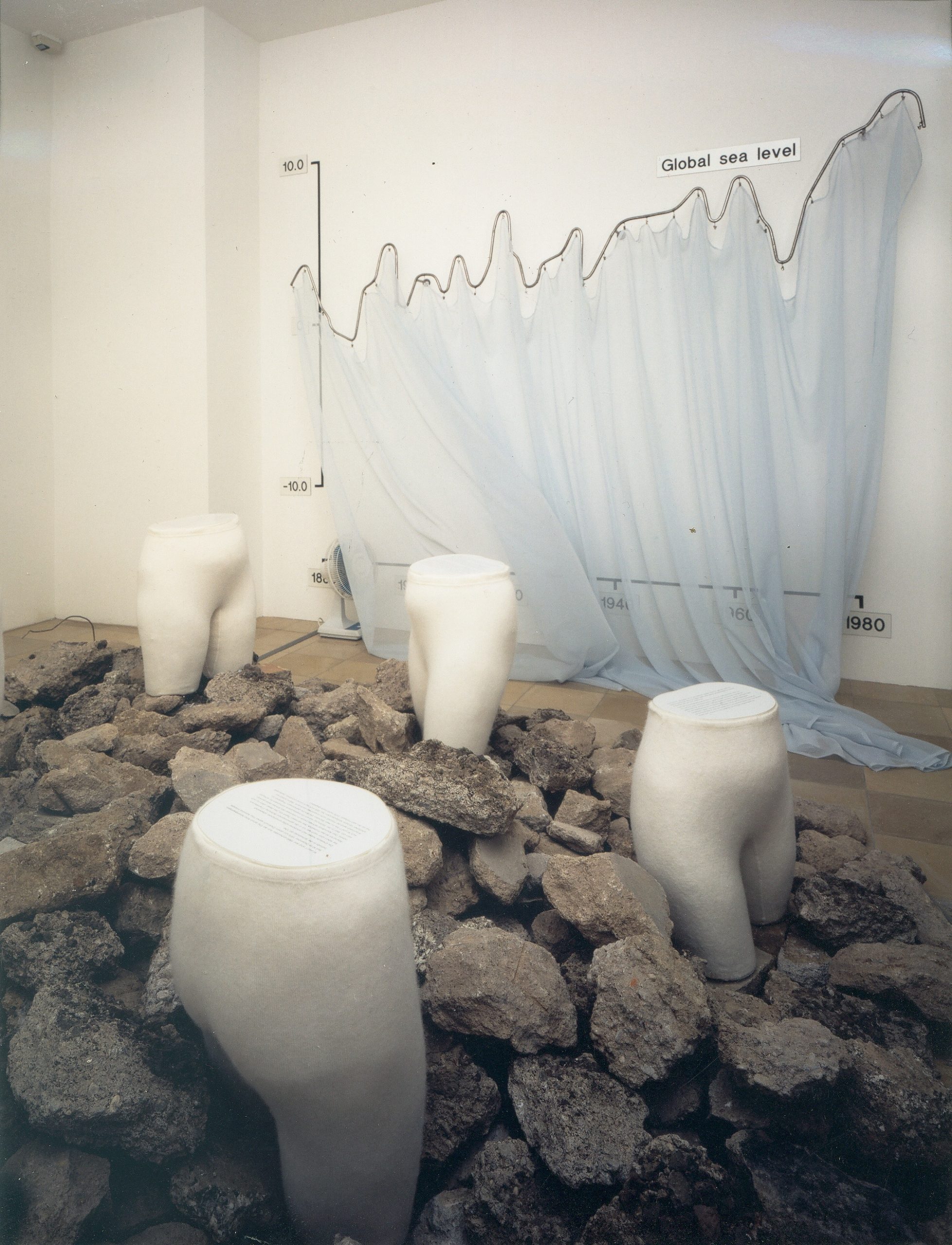on the nature of things
01.06.2009
on the nature of things, 2009
comprises five video projections which atmospherically depict and re-interpret our habitat.
In the exhibition space five projections are set up like a landscape. Each of these projections represents one aspect of the manifestation of nature as altered by civilization, so creating a space where a “third nature”‚ is experienced. The projections are always visible but need to be viewed from some distance so that an audio environment can evolve in front of each them. The areas can be experienced just by strolling through them.
Each projection consists of one video loop lasting between 90 seconds and six minutes. In these projections, weather and global energy balance phenomena are set to the sounds of social events such as football, Formula One racing or group laughter. In these, people develop their desires and visions with collective power.
The installations seek out people’s motivations in designing and running their civilization – sporting and event culture, energy management as the heartbeat of modern society. In the end the dream of cold technology sweeps temperature charts and climate change before it.
In his work On the nature of things Lucretius still pre-supposed a closed cosmos and the presence of natural deities. But in the age of On the Internet of things, the title of his work assumes a new flavour: human artefacts acquire their own nature while moving, once they have been created and located, into a self-explanatory state of existence. Here then, technology thus appears to acquire its own justification for existence, which like the creation of the world, is beyond dispute.
In this sense I now depict the first, original nature as a consequence of human behaviour, as it can certainly now be understood in this the era of climate change.
Social upheaval is exemplified not only climatically, or by way of natural disasters, but also by social phenomena and processes.
Laola
On 27 February 1990 I went to the Netherlands to film the sea. I had selected the period of spring tides in the hope of a moderate sea swell. Unexpectedly a storm of historic proportions developed. We had great difficulty keeping the tripod steady and not being blown away ourselves, camera and all. Nineteen years later climate change is on everyone’s lips. Our society has changed a great deal.
I set the surges of enthusiasm from crowds in football stadiums to the waves. With all the drama of the situation – high tides and a rising sea level – a sense of euphoria persisted, stemming as much from the power of the sea as from the naturally synchronised voices of thousands of spectators in a stadium.
quichote
Wind turbines, nothing but wind turbines in the landscape, rotating at slightly different speeds, but not with the local sound of the wind but with the sound of Formula One racing.
We are no longer used to believing that an element in motion does not move “by itself” or “naturally”, we instantly assume it to be driven mechanically, appropriating this with enthusiasm. In the video a sound space develops in which a car is allocated to each wind turbine, but differentiated by its close or distant location. A vision of a technically codified landscape emerges, in which artefacts of civilization appear to be causing natural phenomena such as the wind.




